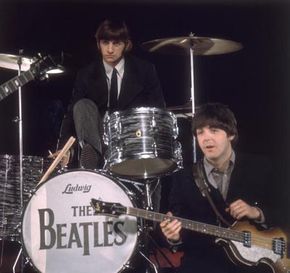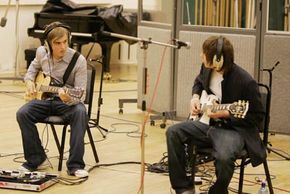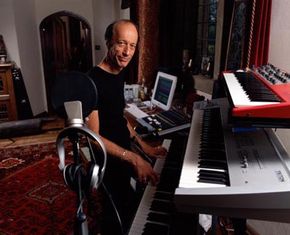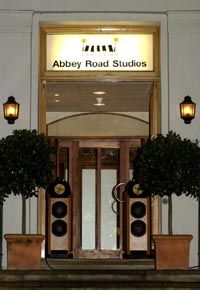The history of recording studios traces back to the 1800s with Thomas Alva Edison and his invention of the phonograph. Initially intended to improve the telephone, the phonograph created a way to record and play back sound. Edison applied for a patent in 1877 for his talking machine, which used foil cylinders.
Ten years later, Emile Berliner found a way to etch the sound-carrying groove on a horizontal disk's surface along with a way to mass produce recorded disks.
Coin-in-slot, sound-reproducing boxes became popular in arcades in 1889, and the New York Phonograph Company opened the first recording studio a year later. By 1902, recordings were being reproduced on thick wax disks, and opera singer Enrico Caruso had completed his first recording. Then, in 1904, Lee de Forest's invention of the triode foreshadowed the demise of the hand-cranked Victrola in the 1920s and the beginning of electronically recorded music [source: History of Rock].
Western Electric made electronic recording using microphones and amplifiers possible in 1925. Before that, performers in a music studio had to sit very close to the bell of a horn to record. This could mean crowding a large band or orchestra into a small space without a way to balance the volume produced by the various performers. Sound waves traveled through a membrane and onto a wax-coated disk.
Using the new technology, large groups could sit in their usual formations and sound volume could be modified, but larger halls were needed to produce the acoustics for a natural sound. Until the late 1940s, though, recordings could not be edited. That's because records continued to be produced by sending sound direct to disk and then creating a metal master to use in making copies [source: London: A Musical Gazetter].
That changed when the recording industry began using magnetic-coated sound recording tape. A German company, I.G. Farben, had improved the tape-coating process during the 1930s, but the tape didn't become available to the United States and other Allied nations until after World War II.
The arrival of multi-track recorders in the 1950s allowed studios to take cutting and mixing music a step further by taping and then combining separate tracks recorded at different times. The move to two-channel stereophonic sound in the late 1960s extended sound mixing even further by allowing studio engineers to experiment with effects like echo and reverb.
The 1970s saw long-playing disks (LPs) replaced by cassette tapes, which made music portable and offered technological advances like Dolby B noise reduction. However, the compact disc and digital tape recorder had superceded cassettes by the mid-1990s. The digital tape recorder allows studio tapes to be re-recorded onto digital tape, which is then used to burn master laser disks. From these, aluminum-coated plastic copies, or CDs, are made [source: History of Tape Recording].
The move to digital technology has extended beyond just tape production. Using digital devices and sometimes little more than a computer, musicians can easily and inexpensively combine composing, performing, recording and mixing functions.
Are you considering the option of building your own recording studio? Let's look next at what you'd need.




